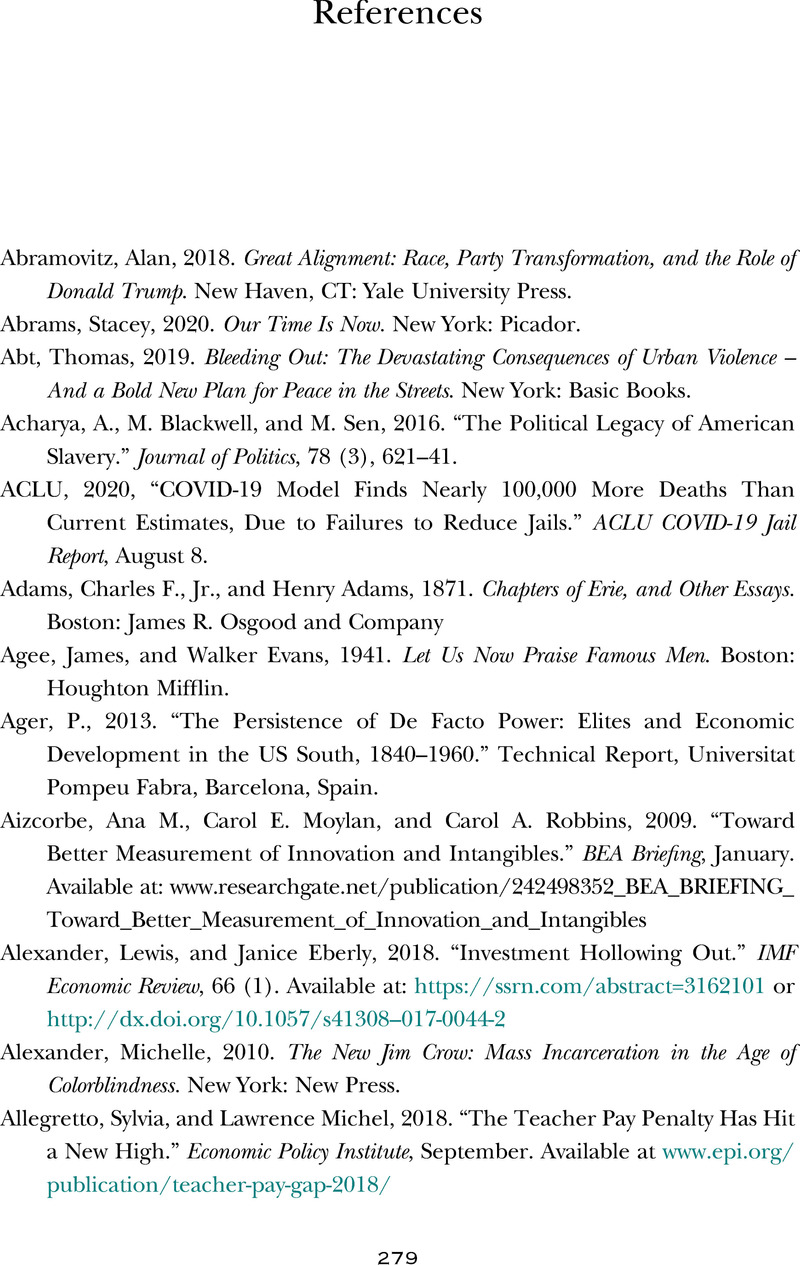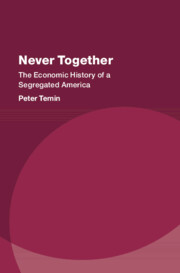References
Published online by Cambridge University Press: 10 February 2022
Summary

- Type
- Chapter
- Information
- Never TogetherThe Economic History of a Segregated America, pp. 279 - 306Publisher: Cambridge University PressPrint publication year: 2022



